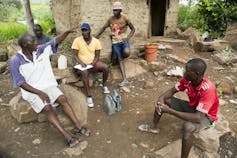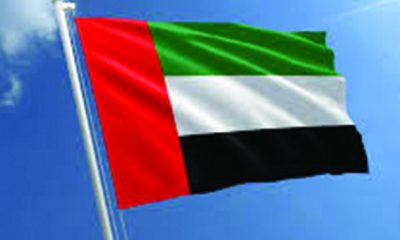By Mary Taruvinga / Darlington Gatsi
DESPITE the recent launch of Zimbabwe Gold (ZiG) currency by the Reserve Bank, many Zimbabweans are finding themselves priced out of the market yet again.
ZiG is already circulating on the market electronically and the hard currency is expected to be released on the market this week.
NewZimbabwe.com has established that retailers across the country are increasingly favouring the US dollar for transactions, with some setting prices directly in line with the volatile black market exchange rate.
This trend comes as a blow to hopes that the new currency would stabilize the economy, and ease access to basic goods.
A snap survey carried out by NewZimbabwe.com revealed a mixed picture.
While some retailers are displaying prices in both USD and ZiG dollars at the official exchange rate, others are charging exorbitant mark-ups for local currency purchases by pegging prices using unjustified exchange rates.
The official interbank rate stands at US$1-ZiG1400 but some retailers are transacting using rates as high as ZiG1900
At Gain Cash and Carry, owned by National Foods, a 10 kilogramme packet of mealie meal is costing ZiG107 while in US$ it is fetching US$6.20.
The same product at TM Pick n Pay is costing US$6.97 while in local currency it has been pegged at ZiG92.70
Mohammed Mussa, displayed a signage accepting the local currency, but refused to accept the transactions at till points.
A cashier at one of the four operational tills said the system had been down since Thursday morning. Two follow-ups on Friday morning and afternoon also revealed that the system “was still down.”
An unsuspecting worker at the wholesaler, however, told NewZimbabwe.com that they are yet to accept ZiG currency transactions.
“Pafeya chaipo muno ZiG haritodiwe. Kungoisawo hedu notice incase law enforcement agents walks in. (To tell you the truth, we are only displaying as you can see but ZiG is not accepted here. But you can go to the cashiers and ask),” said the employee.
This practice leaves many Zimbabweans, who earn their salaries in local currency, at a significant disadvantage.
Forced to either forego essential goods or access USD at inflated black-market rates, their purchasing power is severely eroded.
The government has previously warned retailers against such practices, advocating for a dual pricing system that reflects the official exchange rate.

The Financial Intelligence Unit (FIU) is currently carrying out a blitz to nail companies that are violating the laws.
FIU director Oliver Chiperesa recently said tough measures will be taken to send a clear message to would-be offenders.
A total of 11 entities recently had their accounts frozen for refusing to trade in ZiG.
However, enforcement appears to be lacking, leaving consumers feeling helpless.
Many retailers continue to shun local currency on pretext that they are in a process to restructure their systems.
The Confederation of Zimbabwe Retailers (CZR) president, Denford Mutashu said there is need to alert authorities if any of its members are operating outside the law.
He said it has been difficult to track offenders on their side due to lack of resources.
“The issue is sometimes we don’t even have airtime to call authorities. It will be a huge sabotage if any retailers are breaching the law, it is not nice and of course, we can always tip law enforcers,” he said
“So far, I have not used ZiG myself so I’m not very sure about the situation unfolding on the ground,” he added.
Since its launch ZiG has been under constant scrutiny with economists dismissing it as one of the government’s failed attempts to resolve the economic rot.
With hard notes expected to start circulating tomorrow, April 30, confidence in the gold backed currency is low with essential goods priced in foreign currency.
RBZ Governor John Mushayavanhu recently disclosed that fuel will not be sold in the newly launched currency prompting citizens to cast aspersions on the ZiG.
Rosemary Mpofu, the chief executive officer of the Consumer Council of Zimbabwe, called for stiff punishment for those shortchanging consumers.
“CCZ is always in constant engagement with government especially on topical consumer issues. Our recent survey has observed that the big retail outlets have aligned with exchange rate requirements.
“However it is the small retailers and tuckshops that continue to shortchange consumers through speculative tendencies, and they have been doing this even before the introduction of ZIG.
“In that respect we continue to engage government to enhance the enforcement aspect, further to that CCZ continues to educate consumers on shopping tips and avoid service providers that use exorbitant rates. We also recommend for stiffer penalties or revoking licenses for those promoting speculative tendencies,” she said.



















